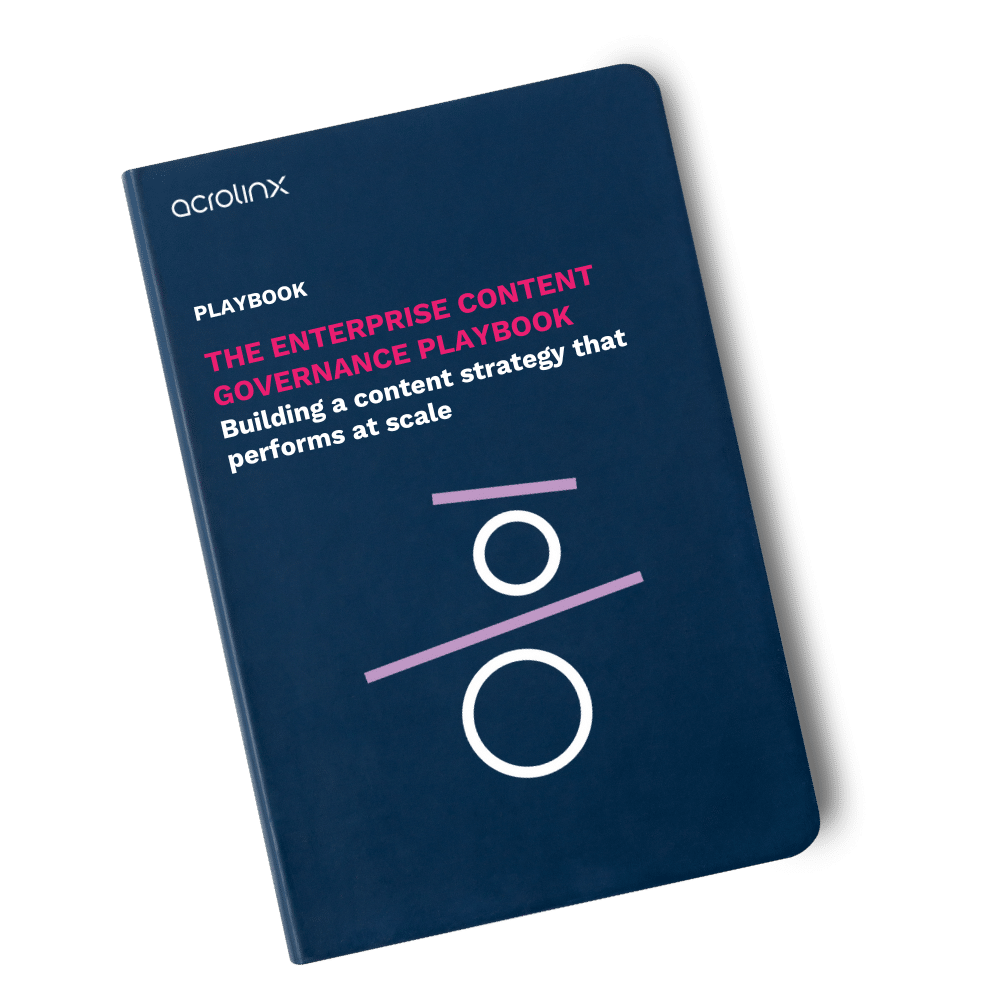End-to-End Governance: How to Manage Customer-Facing Content at Scale

When your business starts to scale, so does your content. Product pages, blog posts, support articles, and social media updates add up fast. As more teams create more customer-facing content, keeping everything clear, compliant, and consistent is increasingly difficult.
That’s why content governance matters for businesses of any scale: It’s the structure behind consistent messaging, brand integrity, and operational efficiency. Done right, it aligns an organisation’s content strategy with their business objectives and delivers high-quality content at scale.
In this article, we’ll explore what content governance really means, why it’s essential for growing businesses, and how you can build a scalable governance model that empowers your teams without slowing them down.
What’s content governance?
Content governance refers to the strategic function of managing content creation, publication, and maintenance according to clearly defined rules, responsibilities, and quality standards. At its core, a content governance model provides the structure that aligns content with your company’s brand guidelines, regulatory requirements, and business objectives.
It safeguards the consistency and clarity of your content across all channels, from social media posts and blog articles to internal documentation and website content.
In today’s enterprise environment, where digital content is produced by multiple stakeholders and distributed across diverse platforms, content governance is essential for you to achieve consistent quality that represents your brand consistently.
Why content governance matters more as your business scales
As businesses grow, so does the volume of content. Teams begin creating content independently, workflows multiply, and the content lifecycle becomes harder to control. Without a clear content governance framework, this leads to content chaos: Inconsistent messaging, duplicated efforts, off-brand language, and delayed approval workflows.
A strong content governance process helps to make sure that your published content remains accurate, on brand, and aligned with your organisation’s goals. It allows content writers, marketing teams, and other team members to collaborate without compromising quality or compliance.
In short, effective content governance supports scalability by bringing order to complexity and maintaining high-quality content as your business grows.

Key components of successful content governance
Consistent terminology and tone of voice
Consistency is key. Whether you’re writing a marketing campaign, HR policy, customer support response, or localising content, the terminology you use shapes your brand identity. Consistent language supports better customer understanding and builds trust. A content governance model safeguards this consistency through clearly defined editorial guidelines and style guides.
Style guide enforcement
Even the best style guide is useless if it’s not followed. Content governance tools like Acrolinx integrate style enforcement directly into the content creation process, providing real-time guidance within authoring environments, such as Google Docs. This helps content teams stay on track and ensures that every piece of content meets quality expectations.
Compliance and legal alignment
For enterprises operating in regulated industries like life sciences, financial services or tech, content governance plays a critical role in safeguarding legal and regulatory compliance. From validating claims to protecting sensitive data, content governance frameworks help define rules that prevent non-compliant or misleading content from going live.
Centralised rules, decentralised content creation
Modern enterprises rely on multiple contributors for marketing to product and customer communication success. A centralised governance model doesn’t slow these teams down. Instead, it gives them the tools and content briefs they need to create content confidently, knowing it aligns with the organisation’s tone, goals, and standards.
Common barriers to content governance
Fragmented content workflows and siloed teams
When different departments use separate content workflows or platforms, inconsistencies and inefficiencies are inevitable. Without a unified content governance strategy, it’s difficult to maintain coherent messaging or track content performance across channels.
Lack of clarity on writing standards
Content writers often lack clear guidance on tone of voice, terminology, or audience expectations. Without an accessible content governance framework, this results in content that doesn’t reflect your brand voice or meet business goals.

Manual review processes that can’t keep up
Manual content approval processes may work at a small scale, but they break down as content production increases. The result? Bottlenecks, missed deadlines, and inconsistent messaging.
Limited visibility into quality metrics and performance
Without visibility into how content performs, it’s difficult to improve it. Governance is also about measuring the effectiveness of your content strategy and identifying opportunities for improvement.
Implementing content governance at scale
To implement content governance successfully at scale, businesses need a clear starting point and a roadmap. The following steps outline how to turn strategic goals into practical action, making governance an integral part of everyday content creation.
How to build a content governance framework
Start by defining your content policies: What tone should be used? Which terms are preferred? Who approves what? Then formalise these in a style guide and governance model that defines roles and responsibilities.
Where to start: Audit, standardise, and scale
Take stock of your existing knowledge base, blog posts, product pages, and other digital content. Identify inconsistencies and prioritise what requires fixing. Standardise the most visible and high-impact content first before scaling governance across your organisation.
Empowering teams with guidelines — not slowing them down
Governance should enable, not restrict. Embed your style guide and rules into the content creation process using tools that offer real-time support. When content governance becomes part of your workflow, teams can produce high-quality content more efficiently.
Integrating governance into authoring environment
Whether you’re creating content in Google Docs, a CMS, or another digital platform, integration is key. Embedding governance rules into these environments ensures every contributor, from seasoned content strategists to new hires, is on the same page.

How Acrolinx supports enterprise content governance
Acrolinx is more than just a proofreading tool. It’s an enterprise content governance solution designed to help large organisations produce clear, compliant, and on-brand content at scale.
With Acrolinx, you can:
- Embed your style guides and editorial guidelines directly into your content creation tools.
- Automate quality control and approval processes for published content.
- Track performance and identify opportunities for improvement using robust reporting and analytics.
- Validate content across the entire content lifecycle — from content briefs and first drafts to final published pieces.
Acrolinx enables organisations to define roles, apply consistent messaging, and align content operations with strategic business goals. Whether you’re managing marketing content, internal knowledge bases, or product documentation, Acrolinx keeps your content governance process running smoothly.
Learn more about how to implement content governance in our playbook.
Are you ready to create more content faster?
Schedule a demo to see how content governance and AI guardrails will drastically improve content quality, compliance, and efficiency.
The Acrolinx Team





